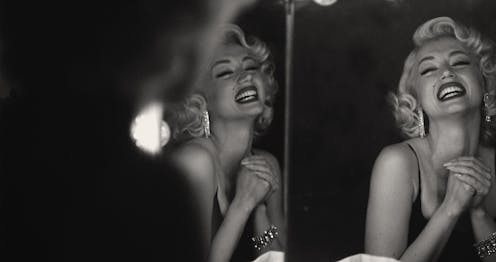Joyce Carol Oates' epic Marilyn Monroe novel captures the violence of celebrity myth-making
- Written by Mel Campbell, Subject Coordinator, Publishing and Communications, The University of Melbourne

Marilyn Monroe died 60 years ago[1], on August 4 1962. And on September 28, Netflix will release Blonde[2], a film by Australian director Andrew Dominik, starring Cuban actress Ana de Armas as Monroe.
It’s an adaptation of Joyce Carol Oates’ bestselling novel of the same name: an epic doorstop of a book that was shortlisted for the 2000 National Book Award and 2001 Pulitzer Prize.

















